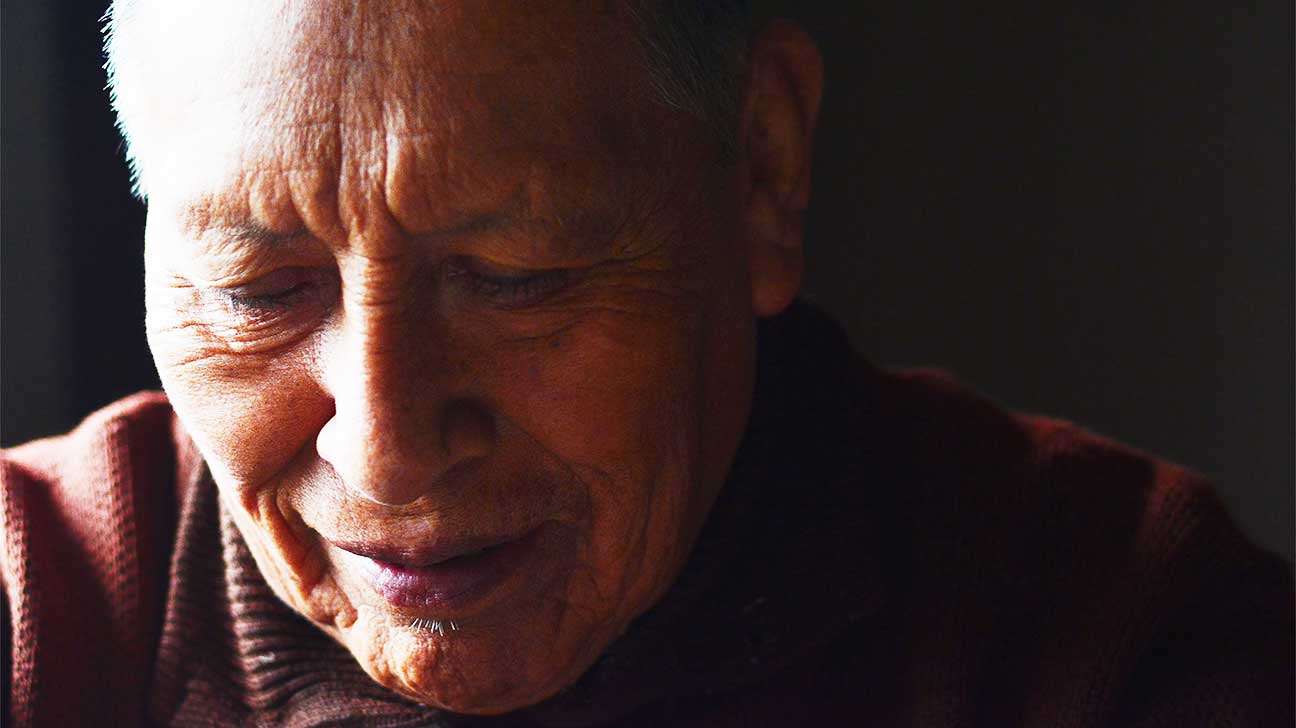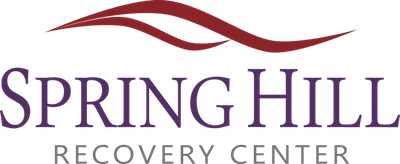Substance Abuse Prevalence Among Indigenous Populations
In the U.S., Indigenous people face some of the highest rates of substance abuse among ethnic groups. These populations face disproportionate amounts of substance abuse risk factors. In spite of these risk factors, Indigenous people also face multiple barriers to treatment.

People of all races and nationalities develop substance use disorders, but some groups face more risk factors than others.
For ethnic minorities, financial disparities and other stressors can leave people especially vulnerable.
For example, many Indigenous people across the United States deal with addiction. These high addiction rates come from several social and historical factors.
In spite of this vulnerability to addiction, Indigenous groups have less access to mental healthcare than other groups.
Substance Use Vs. Misuse Among Indigenous People: Understanding Cultural Context
Disclaimer: Spring Hill Recovery Center does not promote the use of substances. The use of any mind-altering substance, even recreational or spiritual use, can result in mental health issues and addiction.
It’s important to understand the distinction between the abuse of substances and the cultural use of substances.
For many Indigenous and Native populations across North America, Australia, and beyond, natural plants — such as opium, mushrooms, and peyote — have long been used for medicinal value or in sacred practices and rituals.
In the Indigenous community, this form of drug use is not considered misuse, though some researchers may fail to make this distinction when reporting substance use numbers.
However, because law enforcement has not always made this distinction, many Indigenous peoples have been the victims of disproportionate rates of criminalization and incarceration.
While any substance use can be addictive and comes with risks, it’s imperative that we take into consideration long-held practices and beliefs when addressing issues like this.
Indigenous groups may practice “substance use” in certain spiritual settings, which is not the focus of this guide. Instead, we’ll be focusing on people who may engage in “substance misuse,” which is the misuse of drugs or alcohol that is harmful to a person’s health.
By understanding cultural relevance and cultural sensitivity (more than that soon), treatment providers and mental health professionals can better serve these communities.
Addiction Percentages Among Indigenous People
The Substance Abuse and Mental Health Services Administration (SAMHSA) conducted a drug and alcohol survey in 2019.
This survey examined drug abuse among different ethnicities in the United States.
In the survey, more Indigenous people met the criteria for substance use disorders than any other ethnic group, excluding people who reported two or more races.
Native populations have a substance use disorder rate of 11.2%, compared to the 10% rate among the general population.
Addiction Risk Factors
Addiction has several risk factors, including family history, exposure to drugs, and genetics.
Chronic stress has a strong connection to addiction, and many Indigenous people face chronic stress in multiple areas of their lives.
Generational Trauma
Large-scale trauma, called generational trauma, tends to have profound effects, sometimes lasting hundreds of years.
These kinds of trauma include genocide, extreme poverty, and similar tragedies, all of which Native people have experienced at the hands of European settlers.
When people endure trauma, that trauma often impacts how they raise their children. Then, when those children grow older, they pass along the messages and behaviors that they learned from their own parents.
The study of generational trauma is relatively new, but early studies connect it to many negative health outcomes.
One of those outcomes is taking health risks, which may include drinking problems and using illicit drugs.
Discrimination
Among minority communities, a major source of chronic stress is discrimination.
According to discrimination research, Indigenous Americans report facing harassment, slurs, threats, and insensitive comments.
The stress that comes from repeated discrimination can contribute to several mental health struggles, including addiction.
Vulnerability To Violence And PTSD
In addition to verbal abuse, today’s Native populations also face high levels of violence, according to the research above.
Researchers have found a strong connection between addiction and exposure to violence. Notably, violence often results in post-traumatic stress disorder (PTSD).
PTSD is a psychological disorder that can occur when a person witnesses or experiences trauma.
Some symptoms of PTSD include:
- sudden, unwanted memories of the traumatic event (“flashbacks”)
- increased anxiety
- depression
- feelings of guilt
- hypervigilance
- nightmares
- insomnia
- irritability
- social isolation
Many people with PTSD also experience substance abuse. Some use drugs and alcohol as a means to block unpleasant memories, create an escape, or self-medicate PTSD symptoms.
Co-Occurring Conditions
In addition to PTSD, Indigenous people face other mental health conditions at higher rates than the general population.
When a person has an addiction as well as another mental health condition, these conditions are called co-occurring disorders.
Common co-occurring disorders with addiction among Native and Indigenous groups include anxiety and depression.
Having a mental health condition can increase a person’s risk of developing a substance abuse disorder.
Additionally, the two disorders tend to have a mutually exacerbating effect. As one condition worsens, the other may follow suit.
Commonly Abused Drugs Among Indigenous Communities
Drug use varies among different Native American communities. However, some substances are more commonly abused than others.
The most commonly abused substances among the Indigenous community are alcohol, opioids, marijuana, and methamphetamine.
These substances are followed by cocaine, inhalants, and hallucinogens, which are used less frequently in comparison.
Alcohol Abuse Among Indigenous Populations
Alcohol is one of the most commonly abused drugs among all populations in the United States.
Unlike some other substances, alcohol is legal for those over age 21, and it is often present at social gatherings.
Because exposure to a drug increases a person’s chances of becoming addicted, alcohol use disorder is common.
According to SAMHSA’s 2019 research, Native American and Alaskan Native people report more alcohol use disorders than any other ethnic group in the United States.
Opioids In The Indigenous Community
Opioids are drugs that doctors sometimes prescribe for acute or chronic pain relief. When opioids interact with the brain’s opioid receptors, they block pain signals.
However, these medications are also highly addictive.
Opioid addiction disproportionately impacts Indigenous communities. Furthermore, Indigenous communities face higher rates of opioid overdose deaths than many other groups.
According to Indigenous-focused opioid initiatives, pharmaceutical companies distribute large amounts of opioids to American Indians and Alaska Natives (AI/ANs).
Meanwhile, poverty and other social factors often prevent Native people from accessing less addictive pain treatment.
Study findings revealed a similar crisis in Canada:
- In British Columbia, while Indigenous people represent just 2.6% of the total population, the mortality rate for Indigenous people who use drugs is five times higher than non-Native groups.
- Indigenous groups account for 10% of overdose deaths, including opioids and other drugs.
- Indigenous women are eight times more likely to experience a nonfatal overdose and five times more likely to experience a fatal overdose than non-Indigenous women.
Marijuana Use Among Indigenous People
Marijuana is widely used among Native people, including Native youth.
In the United States, many areas with large Native communities are in states where marijuana use is legal. Increased access to substances can increase a person’s risk of abusing that substance.
In a 2018 study, researchers found that while cannabis use has generally decreased in countries such as the U.S., Canada, New Zealand, and Australia, rates of cannabis use in the Indigenous populations of these countries are 1.3 to 1.9 times higher than the national averages.
The study found the following about Australian-based Indigenous groups:
- Men were more likely (77%) to report lifetime use than women (59%).
- Nearly half (48%) of participants engaged in heavy cannabis use.
- Fifty-two percent reported daily use and 43% used cannabis on a weekly basis.
Many of the participants in the study expressed a desire to quit cannabis use. Unfortunately, a lack of treatment and the inability to quit substance use reflects socioeconomic disadvantages.
Researchers have urged others to continue looking into the connection between Indigenous groups and marijuana use, as much more information is needed to serve the community well.
Methamphetamine Addiction Among Indigenous Groups
Methamphetamine (meth) is a powerful stimulant drug that is made from various household chemicals.
Among U.S. ethnic groups, Native Americans have the highest rate of meth abuse, according to addiction research. The exact numbers vary by year, but Indigenous groups consistently show high rates of meth abuse.
According to the aforementioned research, some cartels specifically target Native communities when distributing meth.
Additionally, study results show that Native American youth have a substantially higher risk of methamphetamine use when compared to non-Hispanic white people.
Understanding the risk factors for meth abuse and providing the best care for Indigenous groups is essential because of the highly dangerous effects of meth use, including kidney failure, hyperthermia, and fatal overdose.
Cocaine Addiction Among Native Americans
Cocaine is a drug that comes from the coca plant, which grows in South America. Coca leaves produce a mild stimulant effect when chewed or brewed as a tea.
However, when the leaves are ground and distilled into cocaine, the resulting drug produces a powerful high.
Some Native populations show high rates of cocaine abuse compared to the rates of other ethnic groups.
Many Native reservations border Mexico, Canada, and major cities within the United States. Cocaine is often imported to reservations from these locations, according to research from the U.S. Justice Department.
Inhalants And The Indigenous Community
Inhalants are substances that people abuse by breathing the fumes they produce. Commonly abused inhalants include aerosol sprays, markers, and paint thinners.
Inhalant addiction is less common than many other addictions in the Indigenous community, but it is still a dangerous health condition.
It is also a condition that affects American Indigenous populations at higher rates than other populations.
Native youth in particular are more likely than their peers to abuse inhalants. Inhalant abuse research reveals several factors shared among Native youth who use these substances.
Some of those factors include:
- co-occurring behavioral problems
- family difficulties
- sensation-seeking behaviors
- alcohol use disorders
Hallucinogen Misuse Among Indigenous People
Hallucinogens are drugs that alter sensory perceptions. When using hallucinogens, a person may experience heightened senses or see and hear things that are not present in reality.
Indigenous populations experience some of the highest rates of hallucinogen abuse in the U.S.
Some people use hallucinogens as a way to deal with stress and anxiety.
Because Native people face high rates of PTSD and chronic stress, some may use these drugs as a means of self-medication.
Effects Of Addiction Among Native Populations
Addiction is a chronic mental health condition. One of the hallmarks of addiction is when a person continues to use substances in spite of the negative consequences.
Some examples of these consequences include social isolation, violence, and negative health outcomes. These consequences do not impact every community equally.
Native Americans in particular are vulnerable to the effects of addiction. One study on Fetal Alcohol Spectrum Disorder and Native Americans reveals several examples of how this vulnerability plays out.
Alcohol-Related Health Conditions
Alcohol use disorder often results in physical health conditions.
Some examples of these conditions include:
- heart disease
- liver disease
- high blood pressure
- stroke
- cancer
- digestive problems
- lowered immunity
- dementia
According to the study above, Native people are five times more likely than white people to die as a result of these causes.
Fetal Alcohol Spectrum Disorder
Fetal Alcohol Spectrum Disorder (FASD) is a condition that can occur when alcohol is consumed during pregnancy.
People who were exposed to alcohol in the womb may deal with long-term physical, emotional, and cognitive difficulties.
FASD rates vary by Indigenous nation. Some nations show similar FASD rates as the general population. Others show rates as high as 2.5 instances for every 1,000 live births.
Treatment Disparities And Barriers
In spite of experiencing high amounts of substance use disorders, U.S. Indigenous populations face treatment disparities when compared to non-Native people.
Access To Health Insurance
Many people with addictions do not receive care due to a lack of health insurance.
For many Native American people, this lack of health insurance comes from poverty.
According to Native financial research, one-third of Native Americans live in poverty.
Researchers cite a lack of job opportunities as one of the primary explanations; however, the issue is far more complex and there are many other factors involved, including discrimination and generational disparities in opportunities.
Access To Education
Child development research shows that Native American children have less access to quality education than non-Native people.
Educational disparities are associated with higher rates of addiction. Furthermore, a lack of education can prevent people from receiving the addiction care they may need.
This lack often means that people don’t know what treatment options they can access.
Lack Of Transportation
Native Americans are a more rural population than many other ethnic groups in the United States.
In 2010, for example, population research revealed that 29% of Native Americans lived in rural areas. This number is nearly twice as high as that of the general population.
Rural life creates some barriers to addiction treatment, including a lack of access to resources such as public transportation.
People in rural areas often have less access to transportation than their urban and suburban peers, making the ability to get to treatment much more difficult.
According to SAMHSA, among people who needed but did not receive addiction treatment, many cited a lack of transportation as the reason why.
Best Practices For Addiction Care Providers
For Native Americans and many other minority groups, a major concern in addiction treatment is culturally competent care.
Cultural competence is the ability to acknowledge, respect, and appreciate a patient’s culture.
Culturally competent providers understand that not every culture views or talks about mental health in the same way.
They understand that their patients may have unique values and practices that may influence how they approach their own recovery.
Few studies have been conducted on cultural competence and addiction treatment.
Nevertheless, early studies on cultural competence show that when providers respect and accommodate their patients’ cultures, the patients experience better outcomes.
Best Addiction Treatment Practices For Indigenous People
While few studies have examined the best healing practices for Indigenous people specifically, existing addiction studies do provide some insights.
First, several addiction treatments have been proven successful, not just for Indigenous people but for substance abuse in general.
Cognitive behavioral therapy (CBT), for example, shows participants how to respond to negative thought patterns that can lead to drug use.
Some researchers have shown areas in which Indigenous and western healing practices differ, and they suggest that it may be beneficial for Native people to incorporate their own spiritual values into their treatment.
For instance, while western practices may emphasize individual healing, Native practices may emphasize community. For some Indigenous people, practices such as group therapy may be especially beneficial for this reason.
Likewise, adding holistic therapy to a treatment plan can allow participants to maximize their success.
Breathwork, natural remedies, spending time in nature, visualization exercises, and other practices can offer a more grounded approach to the recovery process that many Indigenous people can connect with.
Resources For Indigenous People Recovering From Addiction
For Native Americans dealing with addiction, the following resources can provide guidance and information on mental health and available services.
- Indian Health Service, Find Treatment: The IHS is a division of the U.S. Department Of Health And Human Services. Use the IHS Treatment Locator to find an Indian Health Service, Tribal, or Urban Indian Health Program facility for mental health or substance abuse.
- Indigenous Story Studio: a Canadian organization that produces comic books, videos, and other visual artwork to promote Indigenous mental health
- Native Hope: a nonprofit organization that assists Native communities and addresses the injustices committed against these communities
- Native Justice Coalition: a platform that promotes healing and justice for Native Americans
- One Sky Center: an organization that provides resources and advocacy for Native mental health
- StrongHearts Native Helpline: an Indigenous-specific domestic violence hotline
- WeRNative: a resource run by Native youth that connects Native young people to health resources
- American Psychological Association — The Legacy Of Trauma https://www.apa.org/monitor/2019/02/legacy-trauma
- Indian Health Service — Disparities https://www.ihs.gov/newsroom/factsheets/disparities/
- National Institute On Drug Abuse — Inhalants DrugFacts https://nida.nih.gov/publications/drugfacts/inhalants
- National Institutes Of Health HEAL Initiative — “To Walk In The Beauty Way”: Treating Opioid Use Disorder In Nativ Communities https://heal.nih.gov/news/stories/native-cultures
- National Library Of Medicine — Chronic Stress, Drug Use, And Vulnerability To Addiction https://pubmed.ncbi.nlm.nih.gov/18991954/
- National Library Of Medicine — Some Thoughts About The Epidemiology Of Alcohol And Drug Use Among American Indian/Alaska Native Populations https://pubmed.ncbi.nlm.nih.gov/25985068/
- National Library Of Medicine — Treatment Of Co-Occurring Posttraumatic Stress Disorder And Substance Use Disorders https://www.ncbi.nlm.nih.gov/pmc/articles/PMC3466083/
- Substance Abuse And Mental Health Services Administration — Co-Occurring Disorders And Other Health Conditions https://www.samhsa.gov/medication-assisted-treatment/medications-counseling-related-conditions/co-occurring-disorders


